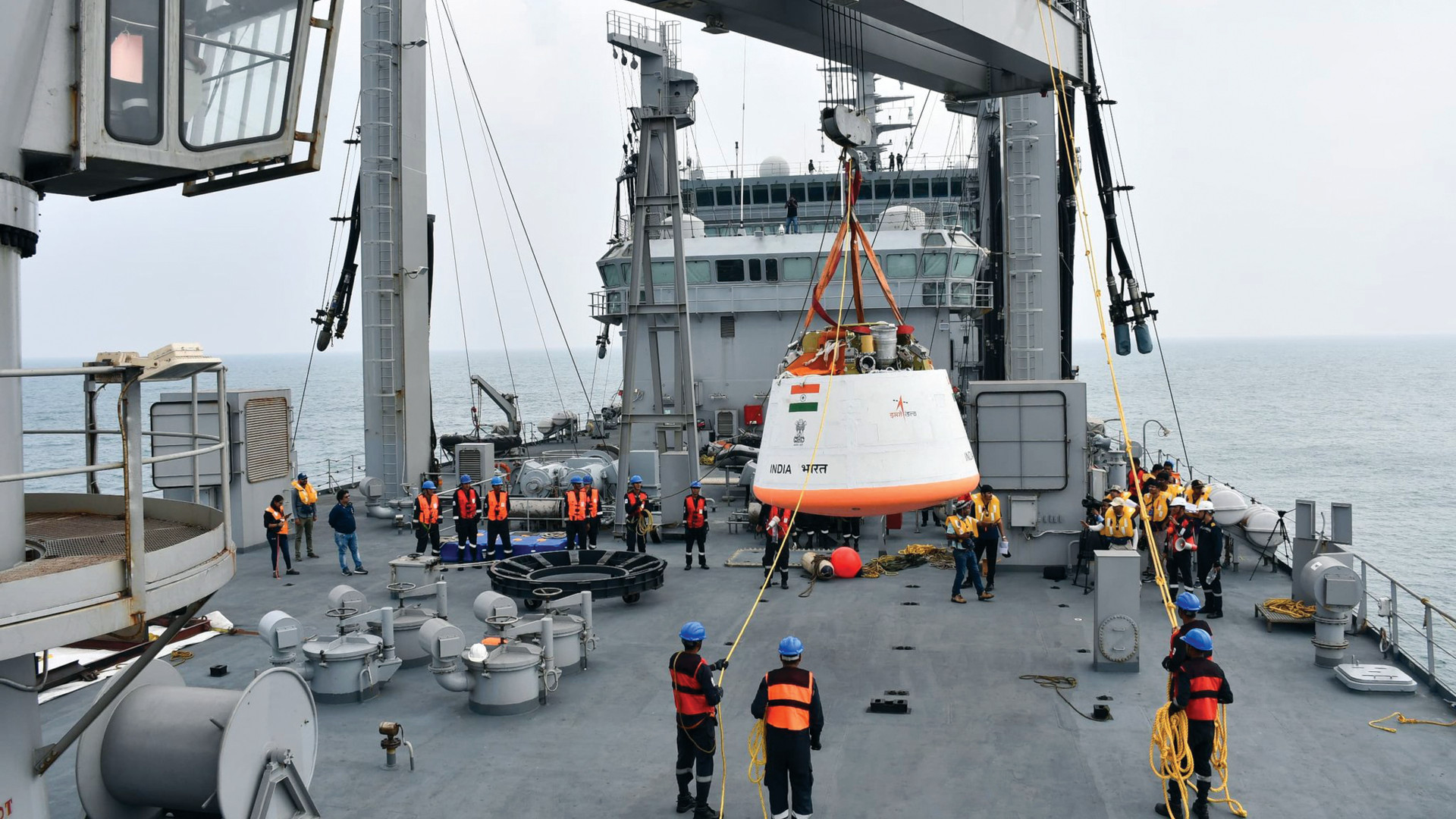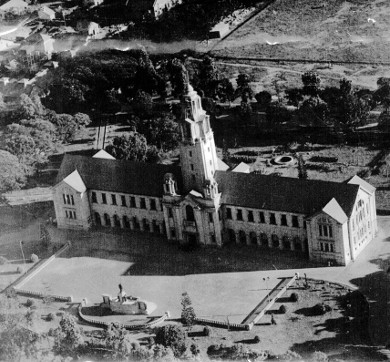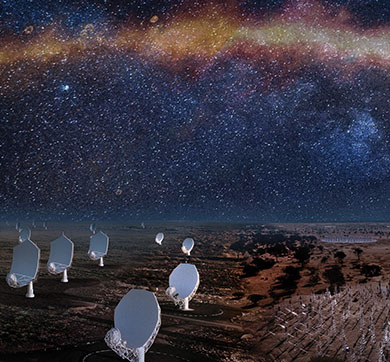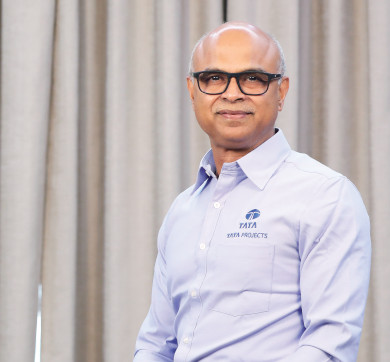March 2024 | 1738 words | 7-minute read
The anticipation in India on the evening of August 23, 2023, was the kind usually reserved for major Indian cricket matches. People remained glued to their screens — in offices, on roads and in homes — as India’s new vehicle to the moon, Chandrayaan-3, prepared for landing. So much so that the Indian Space Research Organisation’s (ISRO) broadcast on YouTube clocked 8 million+ concurrent viewers, making it the most watched live stream on the platform till date!
As the nation watched with bated breath, the successful soft landing of the Vikram lander made India the first country to land near the lunar south pole and only the fourth in history, after the erstwhile Soviet Union, United States and China, to make a soft landing on the moon. This watershed moment — the latest in India’s strides into space — and the global growth of the space ecosystem have leapfrogged opportunities for the private sector.
Powered by India Inc
According to a July 2023 Space Foundation report, the global space economy was valued at $546 billion, and a conservative modelling anticipated nearing the $800 billion mark within five years. To increase India’s share of the pie in this growing space economy, the government has highlighted the need to provide non-governmental entities scope “for enhanced participation” in the country’s space programme.
“Over the last two decades, the private sector has played an increasingly important role in other spacefaring countries within the global space economy. … In India, however, players within the private space industry have been limited to being vendors or suppliers to the government’s space programme,” a report published by the government in 2023 noted, adding, “It is necessary to enable private entities within the Indian space sector to establish themselves as independent players capable of end-to-end space activities.”
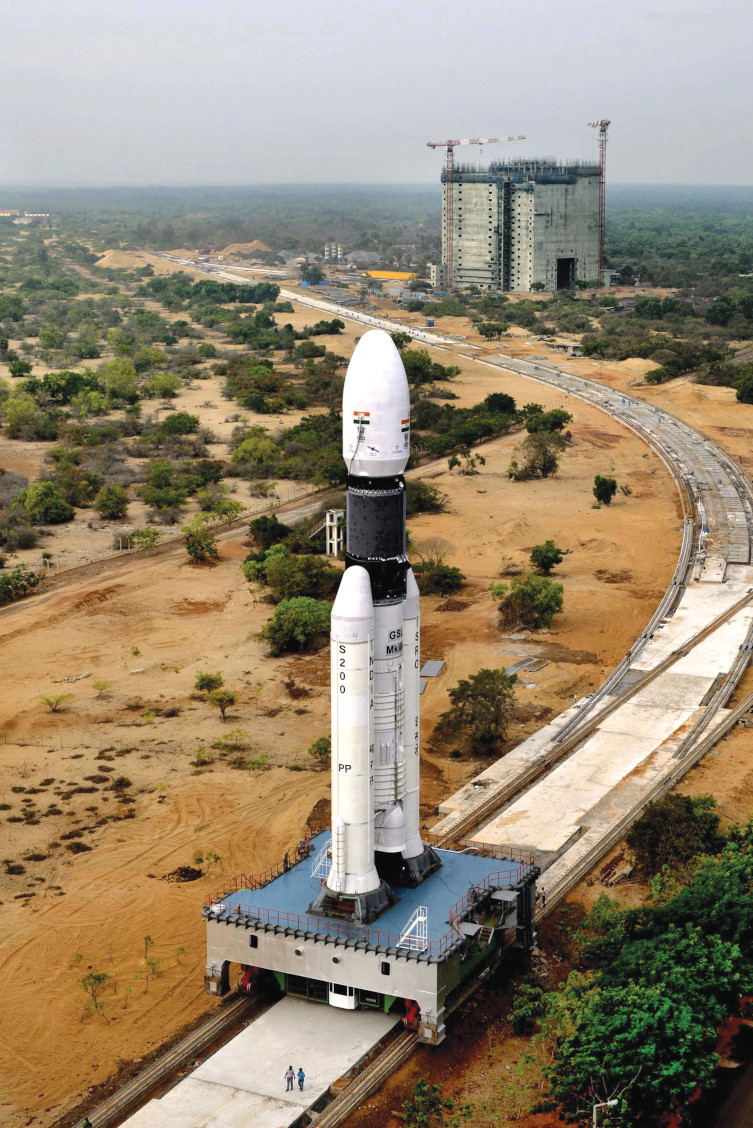
Tata companies like Tata Consulting Engineers (TCE), Tata Elxsi and Tata Projects are poised to make the most of this opportunity.
“The world has realised that our technology is at par, or in some cases ahead, which means that we will get a lot of the international market coming to India for their launches. Finding cost-effective solutions requires real innovation. Why wouldn’t the West want it, too?”—Amit Sharma, Managing Director and Chief Executive Officer, TCE
Vinayak Pai, Managing Director and Chief Executive Officer, Tata Projects, which is working on three ISRO projects, says, “The private sector’s role in India’s space endeavours is undergoing a profound evolution, and Tata Projects is actively contributing to this paradigm shift. Our approach emphasises not only keeping pace with the rapid advancements in space technology, but also pioneering innovation. We are investing in cutting-edge technologies and nurturing a culture of creative problem-solving. We aim to be at the forefront of shaping the future of space exploration, contributing groundbreaking solutions, and reinforcing India’s position on the global stage.”
Amit Sharma, Managing Director and Chief Executive Officer, TCE, which has contributed to ISRO’s launch systems, says, “The world has realised that our technology is at par, or in some cases ahead, which means that we will get a lot of the international market coming to India for their launches. It will mean huge business potential for Indian manufacturers, vendors and design engineering folks like us.”
He draws attention to the other factor that sets our indigenous space technology apart — the smart engineering behind India’s legendary cost-effective space forays. “We have achieved space missions on budgets equivalent to a Hollywood film,” he says. “Our frugal engineering has been painted as jugaad. But jugaad is a shortcut, an unproven and unscientific patch. Space explorations don’t work on patches; you need sustainable, scientific solutions. Finding cost-effective solutions requires real innovation. Why wouldn’t the West want it, too?”
To Mars, moon and the space beyond
Case in point, ISRO’s Mars Orbiter Mission or Mangalyaan, India’s first interplanetary mission, which famously cost less than the budget of the movie The Martian. Interestingly, Tata Elxsi designed and fabricated the digital signal processor-based data control hardware installed in the spacecraft, which acted as a gateway for the mission. The controller hardware acquired data from the payload and transmitted it to the telemetry system for transmission to the ground station after data processing.
The company has now been awarded the mandate to design and develop Crew Module Recovery Models (CMRM) for the upcoming Gaganyaan mission. The project envisages a demonstration of India’s human spaceflight capability by launching three astronauts to an orbit of 400km for a three-day mission and bringing them safely to earth by landing in Indian sea waters. Safe crew recovery must be carried out with minimum time lapse. This is where Tata Elxsi’s CMRMs come into use; two models have already been delivered to naval teams at Kochi and Visakhapatnam to train the recovery teams.
“The Gaganyaan project serves as a launchpad for a virtuous cycle of challenging projects, catapulting Tata Elxsi’s capabilities in the domain of space exploration. We envision collaborating with ISRO for different space projects in the future.”—Manoj Raghavan, Chief Executive Officer and Managing Director, Tata Elxsi.
The project not only marks Tata Elxsi’s foray into mechanical design for space, but is also ISRO’s first instance of outsourcing the mechanical design and development work for a critical system to an external partner. Dr Umamaheshwaran, Director-Human Space Flight Centre, ISRO, says, “Tata Elxsi has carried out the design and delivered hardware, meeting highly challenging delivery schedule of six months, demonstrating excellent programme management skills. This has enabled timely commissioning of the recovery training exercise to meet Gaganyaan mission requirements.”
“This collaboration will help push the boundaries of technology and provide a unique opportunity to advance our capabilities while strengthening India’s space mission,” says Manoj Raghavan, Chief Executive Officer and Managing Director, Tata Elxsi. “The Gaganyaan project serves as a launchpad for a virtuous cycle of challenging projects, catapulting Tata Elxsi’s capabilities in the domain of space exploration. We envision collaborating with ISRO for different space projects in the future.”
Tata Projects, meanwhile, has been awarded three projects by ISRO to help develop its space exploration vision. This includes the turnkey contract for building a Trisonic Wind Tunnel System for the Vikram Sarabhai Space Centre. Wind tunnels are used to simulate the actions of an object in flight and are indispensable for aircraft development. Trisonic signifies that the tunnel can be used for the testing of scaled aero-models in three flight regimes — below the speed of sound (subsonic), at the speed of sound (sonic) and above the speed of sound (supersonic). As India intensifies its space missions, this tunnel will be imperative for the testing of new spacecraft.
Other projects include the establishment of facility fluid systems for the Semi-cryogenic Engine Test Facility (handed over in February 2023) and the establishment of the Integrated Cryogenic Engine and Stage Test facility. The latter, which is in development, is intended to test the cryogenic propulsion systems of ISRO’s Geosynchronous Satellite Launch Vehicle (GSLV) and Launch Vehicle Mark III (LVM3) for future communication satellites and space exploration missions.
“The engagement with ISRO across three significant projects symbolises a strategic alignment between Tata Projects and the pioneering efforts of India’s space agency,” says Mr Pai. “This collaboration goes beyond mere projects; it reflects a shared vision for advancing our nation’s capabilities in space technology.”
Another Tata partner in this shared vision is TCE, whose association with the development of India’s space ambitions dates back to 1971, when it engineered the novel Ooty Radio Telescope (ORT). According to the National Centre for Radio Astrophysics, “Due to its unique, indigenous design and construction, ORT continues to be the largest steerable single antenna.” The company went on to engineer other key Indian radio, optical and cylindrical telescopes before expanding its scope to ISRO’s missions.
“The engagement with ISRO across three significant projects symbolises a strategic alignment between Tata Projects and the pioneering efforts of India’s space agency. This collaboration...reflects a shared vision for advancing our nation’s capabilities in space technology.”—Vinayak Pai, Managing Director and Chief Executive Officer, Tata Projects
“TCE has contributed to the design of essential components and facilities required for the launch of satellite launch vehicles (SLV),” says Mr Sharma. “We engineered the facility that produces the solid propellant powering the SLV and equipment needed for it, the facilities used for assembling the space vehicle, the mobile launch pedestal and the bogie mechanism that transports the SLV to the launch location. All these played a role in the launch of Chandrayaan-3.”
What is implicit in this trajectory is that “these programmes are platform based, and every programme leverages the work of previous programmes,” he explains. “So, when we say we worked on Chandrayaan-3, we mean that we worked on Chandrayaan-2 and Chandrayaan-1 [India’s first deep space mission, which discovered water molecules on the moon] and other significant launches. We are also working on the launch system for Gaganyaan. It’s the same vehicle assembly platform, the same fuel assembly, the same launch pedestal. Changes and updates happen, but you leverage the existing platforms.”
TCE has also partnered with ISRO for the launch of GSLV Mark III and the Polar Satellite Launch Vehicle (PSLV) Integration Facility, which aims to increase the PSLV launch frequency.
“TCE is a valuable partner in our space programme and has provided numerous innovative and indigenous designs,” says Sudheer Kumar N, Director, Capacity Building and Public Outreach, ISRO. “As we expand our missions in the future, TCE is expected to continue playing a crucial role in our upcoming projects.”
Making in India
An important takeaway from these projects has been the ability of companies like TCE and Tata Elxsi to create a local ecosystem beyond their core design and engineering strengths.
“These are one-off projects. You can’t leverage designs from outside. We are given certain criteria, and we work from scratch to evolve that,” says Mr Sharma. “To say we have to think out of the box may be a cliche, but these problems truly don’t have any books one can refer to or precedents one can quote. Our engineers get down to the basics and create the concept. That concept, based on ISRO’s approval, evolves into detailed engineering. Then we get it fabricated with partners.”
Like the engineering, the fabrication too is indigenous, which often means working with partners who have never done this before. “Unlike say an industry like automotive, where you make thousands of parts, here there’s only one part. And that part better be done right the first time,” Mr Sharma adds. “It doesn’t have the option of failing. Every launch has a timing determined by planetary movements, etc. If you miss that timing, your launch can be significantly delayed. TCE’s DNA has contributed towards our success in all such discovery-led projects.”
Tata Elxsi built a similar ecosystem of local partners to fabricate the CMRMs for Gaganyaan, do the necessary build out and also help with the testing and validation before delivery.
For stakeholders, including the government, these developments in the private sector will serve as building blocks for India Inc to start making in India for the global Space Inc.
—Monali Sarkar
Photos courtesy: Indian Navy, www.isro.gov.in




